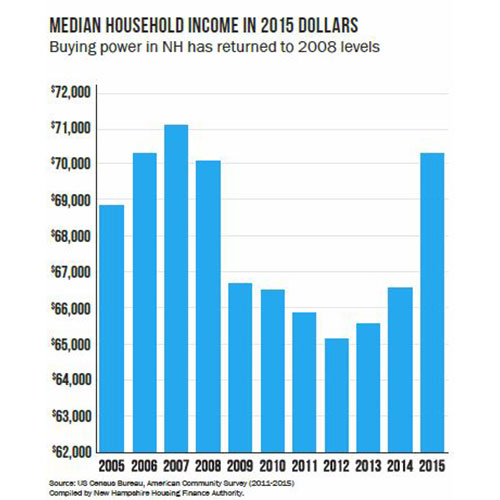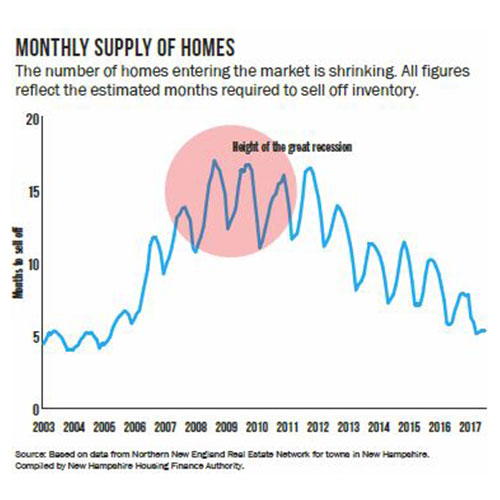FEATURED HEADLINES
Food: Making The Cut
FEATURED FOOD
Making The Cut
Workshop Teaches Culinary Knife Techniques
Written By Angie Sykeny (asykeny@hippopress.com)
Images: Stock Photo
Unless you’ve been to culinary school, it’s possible that you’ve been misusing your kitchen knives all along — which is why LaBelle Winery is offering a chance to learn more effective knife skills during a workshop on Wednesday, June 14.
The workshop will answer questions like what kinds of knives to use for different kinds of food, how to use them effectively and how to cut safely.

“People really appreciate it because many of them have never had this type of instruction unless they went to culinary school,” said Michelle Thornton, director of sales, business and program development for LaBelle Winery. “We all have a set of knives in our drawers, but do we know how to keep them sharp or how to not get cut? Many people realize they’ve been cutting the wrong way their whole life.”
Each participant will be given a set of knives and various fruits and vegetables on which to practice the knife techniques, such as carrots, potatoes, celery, apples and onions. Participants will watch demonstrations of different cutting, slicing and dicing techniques using different types of knives, then try out the techniques on their own, asking questions and receiving personal, hands-on instruction when needed. “There’s a lot of back-and-forth and one-on-one,” Thornton said. “Someone will come over and guide you and show you where to put your fingers and how to move the knife. It’s truly a learning environment.”
The class will also feature an integrated wine tasting in which participants can try several varieties of LaBelle wine.
Taught by winemaker and winery owner Amy LaBelle and the winery bistro’s Executive Chef Eddie Ceccherini, the class is one of the most-attended programs in The Winemaker’s Kitchen: Cooking with Wine Instructional Series, a series of cooking programs featuring dishes with wine as the main ingredient.
“A few years ago, when giving her instructional cooking classes, Amy realized that when she demonstrated chopping and preparing things with knives, people asked a lot of questions,” Thornton said. “It dawned on her that there was a need for a class to help people better understand those basics.”
A second knife skills class focused on creating garnishes and artistic food displays will be held on Wednesday, Sept. 13.
Knife Skills Class
Where: LaBelle Winery, 345 Route 101, Amherst
When: Wednesday, June 14, 6 to 7:30p.m.
Cost: $25. Registration required by June 11.
Contact: 672-9898, labellewineryevents.com
News: Real Estate Rush *
FEATURED NEWS - * COVER STORY *
Real Estate Rush
Why Buyers are Caught in a Feeding Frenzy for Homes and How to Buy a House in this Tough Market
Written By Ryan Lessard (news@hippopress.com)
Images: Courtesy Photos
When Eva Stenberg of Newport started looking for a house last fall for her two college-age sons and a couple roommates to stay in while they attended school, she had no idea what she was getting herself into. She quickly had to raise her initial price range of $150,000 to $160,000 because all she could find in that range were mobile homes. She passed on a $200,000 home in Epsom because the location wasn’t ideal but has regretted it ever since — as she would soon learn, the competition for starter homes has reached a fever pitch over the past year.
“It was no longer people underbidding the requested price, it was people overbidding,” Stenberg said. “The pricing started to creep up on us, so it got harder and harder. And by the time we were in the January, February time frame, the houses were turning in three to five days. We didn’t even know it was on the market and it would already be pending.”
Each home she encountered was the target of a bidding war. Ultimately, she visited nearly 25 homes before closing on a house in Nottingham for $200,000. On average, Stenberg estimated, they looked at about three to five houses every weekend.
“I’d say a lot of them were bought before I could even get an appointment to look at them,” Stenberg said. “There were some that we went to go see and we found out that evening they were pending. We didn’t even have a chance.” What Stenberg encountered is happening across southern New Hampshire, and experts say it’s caused by record low housing supply and growing buyer demand.
Taking Stock
The state has fewer available houses on the market than ever before. According to the most recent data released by the New Hampshire Association of Realtors, there were 5,275 houses for sale statewide in April. That’s down from 7,726 in
April 2016 and 8,525 in 2015. And it’s the lowest it’s been since they started to track those numbers in 2005.
“We don’t physically have enough inventory for buyers who want to buy homes,” said NHAR President Rachel Eames.
While demand has gone up in the past year, Bill Ray at the New Hampshire Housing Finance Authority says inventory has not kept up, which makes the supply side the anomaly in this situation.
And the problem is not unique to houses. Apartment units are also extremely scarce. Ray said the 2017 rental housing report due later this month will show a continued decrease in the rental vacancy rate. Preliminary numbers show the vacancy rate for two-bedroom apartments (not counting subsidized units) to be at 1.4 percent, an all-time low.
“Since I have been here, in 21 years, I have not seen that,” Ray said. That dynamic is naturally raising rents, which in turn drives more people to seek homes. Robert Tourigny, the executive director of NeighborWorks Southern NH, said the tight housing market combined with the tight rental market has created a perfect storm for prices to skyrocket.
“I don’t recall seeing both of them as tight as they are right now. Usually if the home buyer market is really robust then it leaves some vacancies and such in the rental market. And the opposite is true,” Tourigny said. “But right now, what seems like the last few months, the demand on both sides, I think, is unprecedented.”
The main reason housing inventory is unusually low is that there aren’t enough new houses being built. Construction virtually stopped during the recession. This was partly due to a mass exodus of contractors during the recession. But for those developers who are still working in this industry, there are many barriers to new building new houses, from local ordinances to land availability and land prices.
“Access to financing for the buyers is always a challenge, as well as getting through the development approval process at the local level and zoning requirements,” Tourigny said.
And as long as the focus is on building multi-family rental units, Ray concludes that those projects must be more profitable. Right now, Ray said, the highest demand is among houses priced at $300,000 and below, which the Housing Authority defines as first-time homes. But those are not a priority for developers.
“We’re not seeing a lot of housing built for sale for under $300,000. In fact, I’m not sure if there’s any,” Ray said. Eames said developers are only building an estimated 20 percent of the housing stock that’s needed.
The market is tightest in the southern counties with the greatest populations: Hillsborough, Rockingham, Strafford and Merrimack. And as the state runs out of houses, more and more people are looking to buy houses.
Buying Power
The immediate driver of housing demand in the state is the economic recovery.

“What we’ve seen is economic improvement, especially in the southern part of the state,” Ray said. As a result, more people can afford homes than during the recession. According to a March report by the Housing Authority, median household income in 2015 roughly returned to 2008 levels, when inflation is accounted for.
The economic recovery also means an uptick in population. Ray said more people are migrating from Massachusetts and looking for homes. The state’s population is expected to increase by 100,000 over the next 25 years, according to Eames.
Young vs. Old
There is also increased competition over starter homes in the $200,000-to-$300,000 price range from different age groups.
Along with young, first-time homebuyers in their 20s and 30s, the market is also seeing a lot of middle-aged empty-nesters and Baby Boomers who are looking to downsize from a bigger, high-maintenance home to something more manageable. Ray said the older buyers often have a competitive edge.
“The downsizers bring equity and as a result they have cash to pay for the houses … and compete better than a first-time homebuyer,” Ray said.
Lisa Capicchioni, a senior loan officer at Residential Mortgage Services, has 25 years of experience in the local housing market. As a lender, she’s seen more buyers in their 40s and 50s who were able to sell their houses at a premium and come to buy smaller houses with more capital for down payments and closing costs.
And Capicchioni said they don’t even need to put down as much as 20 percent to gain an edge. Even with 5 or 10 percent down, they’re making more appealing offers than the zero-down governmentfinanced loans offered to some first-time homebuyers who can’t afford to make big down payments.
The disparity grows more pronounced when a house is in a bidding war.
“When you’re talking about first-time homebuyers, they’re more shackled because they don’t have the ability to keep going up on price,” Capicchioni said. Still, Ray said, the types of homes first time homebuyers and downsizers are looking for don’t always overlap. Downsizers, he said, are often looking for a smaller footprint, but they still want some of the nicer amenities, like granite countertops.
Prices Launching
Low supply and high demand mean higher prices, as any Economics 101 class would tell us. But the problem appears to be exacerbated on the demand side by demographic competition and on the supply side by burdensome regulations at the local level and fewer contractors. On top of that, an aging population getting reverse mortgages to stay in their homes longer and a younger population that moved back in with parents and grandparents have kept more houses from going on the market.
The last time the market was this hot was during the housing bubble, which saw median prices for single-family homes peak in New Hampshire at about $270,000 in 2005, according to data from the NH Realtors Association. In 2016, prices rose to about $249,000, just shy of 2004 prices. By April, median prices rose to $260,000.
Of course, the prices in the early 2000s were inflated by risky lending practices that drove up demand. Right now, Eames said, it’s a “slight” seller’s market because they stand to get asking price in most cases.
“It’s not like prices have gone totally crazy,” Eames said.
In this case, prices represent real value. As long as people can afford the higher prices, this situation will give sellers the advantage. According to data from the April realtors report, sellers were getting 98.1 percent of their listed price. That’s as high as it’s been since 2005.
“They’re getting top price, sometimes even over the listed price,” Capicchioni said.
How to Nab a House
When it comes to buying a house in this market, especially a first home, people need to be equipped with a combination of the common fundamentals and a few additional skills. For a lot of people, the struggle is caused by the speed with which they need to act. Among other things, it means people aren’t given enough time to mull over the major decision of buying a house.
“The market isn’t really allowing them to sit and absorb the numbers. They have to act quickly,” Capicchioni said. And that can mean missed opportunities. Melissa Starkey, the owner of Starkey Realty, said it’s important to be ready to pounce when the right house comes along.
“Be mentally prepared to offer right away if you like the house. Don’t make snap decisions that you’re going to regret. But … if you hem and haw it’s not going to be around,” Starkey said. That can make the process more stressful.
“I think it adds added stress and pressure for sure,” Eames said.
“You’re under the gun to get your offer in and hope it’s the best offer. People get very anxious.” Whether the buyers have had experience in the housing market before or not, they often have to adapt to the highly competitive environment.
Be Flexible
Ryan Tufts, a homeownership counselor at NeighborWorks, said there’s a house out there for everyone, even in this tight market. The trick is being open to change and compromise.

“The people who are most successful right now are the most flexible. Maybe it’s not the right part of town they wanted initially or maybe they made some compromise on how great of shape the home was in,” Tufts said.
He said virtually all of the people he’s helped counsel through the homebuying process have found a home by being flexible.
“If you’re going to come in saying I need a three-bedroom, two-bath on a nice quiet street with a two-car garage, this is my price range, in this part of town — OK, we’d all love that, but you might have to give up some piece of that,” Tufts said. Eva Stenberg, who bought a house in Nottingham for her two sons, said the trial and error and rapid-fire pace of her search helped to home in on which things she was willing to sacrifice.
“You have no ability to make a choice,” Stenberg said. “You had to learn what you were willing to accept and what you weren’t willing to accept so that you could jump on it.” It also took constant vigilance and keeping an open line of communication with her real estate agent, Starkey, and her lender.
Christine Paige and her husband Richard needed to downgrade from the 2,900-square-foot house they were renting in Epsom. She is 68 and Richard suffered a stroke, so shoveling their long, winding driveway in the winters became impossible. Paige wanted to get a house near the Seacoast, but she soon found that prices were too high and the houses were not always in good shape.
“There were just no homes out there anymore. No good homes,” Paige said.
She also didn’t expect the kind of competition they were up against, so, with the help of her realtor, Rachel Eames, and her loan officer, Carol Jordan at Merrimack Mortgage, she figured out a compromise: look at Seacoast area homes farther inland. She settled on a 2,025-square-foot house in Rochester. Paige says she’s a Type A personality and was stressed whenever she hit a bump in the road, like when the Rochester home had elevated levels of arsenic in the groundwater.
But she credits Eames and Jordan for jumping in at every step to make the process as painless as possible. The arsenic problem, for example, was resolved by getting an arsenic mitigation system installed. Capicchioni said it often takes first-timers losing out on two or three homes before they begin to reevaluate their approach.
Education
Tufts said one of the best ways to be prepared going into the homebuying process is to get educated on the process. This is especially helpful for first-timers but can also serve as a refresher course for someone who has bought a house before.
“For anyone who’s buying a house or interested in learning more about it, the main thing we offer is a workshop that’s geared toward teaching you the fundamentals of home-buying,” Tufts said.
In his workshop, Tufts goes over the benefits and downsides of owning a home and figuring out if it’s the right time to buy. The class goes over basic household budgeting, looking at savings, debts and credit scores. "Knowing what you can afford is important, Tufts said, because too often people bite off more than they can chew.
“The big thing we’ve encouraged throughout whatever the market is like is to really know that you can afford this payment that you’re stepping into and the additional costs of owning a house,” Tufts said. “Maybe their rent and actual mortgage payment might be a little bit equal but usually people are getting a bigger space, they’re going to have a higher utility [cost] so their actual costs are going to go up usually by hundreds of dollars a month in most cases.”
Then he brings in a lender to talk about mortgage options and assistance programs, followed by a real estate agent who talks about why it’s important to have an agent, the home search process and what a purchase-and-sale agreement looks like.
Finally, Tufts invites an insurance agent, home inspector and someone from a title company to go over the final steps, from making sure the house has good bones to considering different insurance options.
“I don’t expect anyone to leave this class a seasoned vet, but I want them to at least have some exposure to what they’re going to encounter so they can continue their research in an intelligent way,” Tufts said.
Build Your Team
As buyers like Stenberg and Paige can attest, having a good team behind you can be the difference between failure and success.
“Having a strong team is definitely something we would recommend,” Tufts said.
Tufts said it’s important to build a good relationship with your real estate agent, lender and possibly a homeownership counselor so that they can communicate with you and sellers and iron out all the difficult parts of the process. Buyers can often lose sight of their own control of the situation, so Tufts said buyers must keep asking questions and make sure their team knows what it is they want.
“Don’t forget that you’re the boss in this situation. No one is really getting paid until you buy the house,” Tufts said.
Real estate agents and lenders are all very skilled at what they do, Tufts said, so buyers need to pick people they are comfortable with on a social level.
“Find someone who talks more your speed and your language to work with you, and who’s available when you’re available,” Tufts said.
Availability is key, which is why Tufts recommends sticking with lenders who are local. Local lenders are more likely to pick up the phone when you need them. In a market where time is of the essence, it’s more important than ever to avoid situations where you’re waiting for days for a call back.
Prequalify
When asked what advice she would give to other homebuyers, Stenberg’s very first point is to start the loan process.
“Make sure you get prequalified. Find the range. Know your max limit,” Stenberg said.
Coming into the home search process with that knowledge will help to narrow your search and inform you when to back away from a bidding war when it starts to exceed your limit.
Robert Tourigny at Neighborworks said that while home prices are currently climbing, loan rates are still very good, hovering around 4 percent. “Fortunately, interest rates have remained quite low for an extended period of time,” Tourigny said.
But Stenberg cautions buyers to not get carried away by the bidding process.
As with many other recent homebuyers, she had to overbid to win her home by a few thousand dollars. But, in the end, she stayed within her price range and was able to do that because she kept in constant contact with her lender and kept sight of what her range was.
Town Research
Eames said that one way to stay limber and quick in the search and bidding process is to complete all the necessary research on the town and neighborhood in advance.
“Typically, for commuting purposes, buyers will be looking at three towns,” Eames said.
If you know what towns you’re looking in, all the research comparing crime statistics, municipal services and school districts can be done already. That way, you’re not scrambling to do extra homework when considering a home in what is likely to be a short window of opportunity.
Wants vs. Needs
One of the very first things Eames does when she sits down with a new client is discuss what a buyer wants and needs. Those things vary from person to person but the more an individual can categorize the things they’re looking for into those two columns, the more flexible they will be when it comes time to compromise and make a decision.
Eames defines wants as luxury items, amenities like a garden plot or a nice view. Needs, on the other hand will make or break a deal. So, if a buyer conflates wants with needs, they likely won’t find that perfect home in their price range.
Write a Letter
In addition to working with an agent to craft the best possible bid and act swiftly in the face of heightened time constraints, a personal letter to the sellers might provide that little extra icing on the cake. Lisa Capicchioni said a personal letter is an opportunity to talk about your story, the things you want for you and your family and maybe your personal struggles.
“So [sellers] can look at them as real people,” Capicchioni said.
The personal stories may tug at the heartstrings of the seller and help you stand out in a crowded field.
Sell First
If you’re coming into the market already a homeowner and you’re looking to buy a different home, often your bid will come with what’s called a home sale contingency. That’s a way to make sure you can transition seamlessly from one house to the next but it also represents a burden for a seller who may be eager to sell fast.
Melissa Starkey said home sale contingencies are a major obstacle to getting a bid accepted in this highly competitive market. A solution may be to sell your existing home first and figure out a temporary living situation while you look for the next home.
“One of the questions I ask sellers is, ‘Do you have a place to go?’” Starkey said.
Even the highest bid can be overlooked if there’s a contingency attached to it. That’s what happened with the home Christine Paige bought in Rochester. She said their bid was the second highest of five with about $10,000 over the asking price. The reason she got the house was that the highest bidder had a sale contingency.
Creative Capital
For young first-time buyers who are hoping to get a house with no money down, that may be possible in many cases still, but in particularly competitive regions it may be necessary to sweeten the deal with a small down payment. Of course, many people don’t have the kind of liquid capital that requires. So, Capicchioni said, it may require turning to family members for personal loans or cash gifts to raise the money needed.
If that’s still not possible, there are assistance programs that can help. The federal USDA rural development loan program provides 100 percent of the home price in certain designated rural areas, according to Tufts. It’s only available to first-time homebuyers. That leaves closing costs, but even then, that cost can be largely covered by the sellers in the negotiations.
In New Hampshire there’s also a tax credit program provided through the Housing Authority called the mortgage credit certificate that can provide up to $2,000 in tax credits per year. Tufts said you have to apply for that before you close on your loan and buyers qualify based on a household income level.
Upcoming Homebuyer Seminars by NeighborWorks/Hometeam
June 10 in Concord - July 15 in Manchester - Aug. 19 in Salem
8:30 a.m. to 4:30 p.m.
Fee to attend is $69 per household (up to two attendees per household).
Visit hometeamnh.org to register.
Arts: Last Hurrah
FEATURED ARTS
Last Hurrah
McGowan Says Goodbye with Bruce McColl Exhibition
Written By Kelly Sennott (ksennott@hippopress.com)
Images: Courtesy Photo
Bruce McColl’s “The Color of Seasons” is the last art show for McGowan Fine Art as we know it today.
Tucked away on Hills Avenue in the heart of downtown Concord, the 16-piece exhibition — bright and representative of iconic New Hampshire scenery — is on view June 6 through July 7, with an opening reception Friday, June 9, from 5 to 7 p.m., and an artist talk on Saturday, June 17, from 11 a.m. to noon.
Gallery owner Sarah Chaffee announced in late April that the gallery, after 37 years, would close its doors this July, but during a recent visit there were still many pieces to frame and loose ends to tie before signing off. Orders and requests have been flying in.

“I think there’s always been this feeling that, I’m a big gallery. I’ve been here forever. I’ll be here forever. So when it was announced, I think a lot of people were shocked,” Chaffee said. “I’m really shocked by how many people are coming out and buying last-minute art purchases. And now I’m trying to figure out, can we finish all this work by our deadline of July 7?” The gallery began in Mary McGowan’s barn in 1980, starting with corporate art consulting and growing to include a frame shop and art gallery. The Hills Ave. space was designed by her husband, architect Duncan McGowan. Chaffee took over when Mary McGowan retired in 2011.
In its closing, Chaffee is most concerned for her “top-notch” staff. Some, like her corporate art consultant Amanda Lacasse, will continue in the field, offering corporate art consulting services privately, but the future is still a little murky for everyone, including her 75 regional artists. For many of them, the gallery is their primary or only representation.
“It was a fast and not-fast decision on my part. It’s been a struggle ever since the recession started. There are changing buying habits,” she said.
More and more collectors are buying art online. But when budgets were tight, Chaffee felt it was important to not cater to just “what people want,” or what she knew would sell. “I also bring in work that I think people should look at, and I think people should like. And those types of galleries are few and far between. They tend to operate in big cities where there’s a much bigger population to pull in,” Chaffee said.
At the time of her interview, McColl’s pieces were at the gallery in the midst of being framed. All are energetic with color and mark-making, bringing to life his interpretation of Granite State sites in Franconia, Derry, Hopkinton and Appledore Isle, plus Sanibel Island in Florida.
For many of the paintings, McColl looked to art history; for example, “Celia Thaxter’s Garden and Babb’s Cove” is like an homage to Childe Hassam’s work. “White Birch, Autumn Winds Beneath Lafayette” was inspired by White Mountain painters featured in the Currier Museum of Art’s fall 2016 exhibition “Mount Washington: The Crown of New England.”
“I think it’s interesting, this day and age, how people are looking at history in a different way and challenging [previous interpretations],” said McColl, who is also director of art education at the Currier Art Center, naming Hamilton as an example.
“There’s such a rich tradition of painters going up to the White Mountains. I felt like I was in the presence of many generations of artists.”
When outdoor temperatures dropped, McColl turned to floral still lifes, but whenever possible he painted plein air, a rare choice among New England artists because of weather. Cool temperatures cause fingers to tense and media to thicken up, whereas heat causes paints to dry fast. Artists must work quickly.
“It’s funny; the work, it is very fast, and you can see there’s a lot of movement in these, but if you look at his strokes, you see they’re well thought out,” Chaffee said. “I think there’s a lot of movement and mark-making.”
For McColl, the choice was as much about the art as it was about time outside.
“All of us are so attached, in our working lives, to our digital and technological worlds. When I’m outdoors, I’m wonderfully disconnected with that part of my life and completely absorbed in experiencing nature with smell and sound and sight. And that, for me, is really transportive,” he said. “When I walk away after a day or two in these landscapes, wrestling with these paintings, I feel energized and revived.”
McColl, like the rest of the art community, is sad to see McGowan’s end, calling it the region’s most important and long-standing gallery. But Chaffee said she hopes to continue the business in some way, looking at options to perhaps open a smaller space with a frame shop, because McGowan has been more than just a business.
“It’s not just selling the artwork, but it’s really about shepherding an artist’s career,” Chaffee said.
Bruce McColl: The Color of Seasons
Where: McGowan Fine Art, 10 Hills Ave., Concord
When: June 6 through July 7; opening reception Friday, June 9, from 5 to 7 p.m., artist talk Saturday, June 17, from 11 a.m. to noon
Contact: mcgowanfineart.com, 225- 2515, art@mcgowanfineart.com
Music: Sing Out
FEATURED MUSIC
Sing Out
Folk Supergroup's Brief Tour Hits NH
Written By Michael Witthaus (music@hippopress.com)
Images: Courtesy/Stock Photo
On Earth Day 1992, Joan Baez, Mary Chapin Carpenter and the Indigo Girls — Amy Ray and Emily Saliers — performed at Foxboro Stadium in Massachusetts. The same group closed out Newport Folk Festival a few months later, this time with a name, Four Voices in Harmony. It would be their last official show for 25 years.
In February, the Four Voices announced a 10-date tour, with a penultimate stop at Bank of New Hampshire Pavilion in Gilford. In a recent phone interview, Amy Ray talked about the supergroup’s beginnings, performing at Baez’s Rock & Roll Hall of Fame induction and planning for the tour planning.

How did the Four Voices tour come together?
We’d been touring with Joan a little bit over the past couple of years and we’d also done some shows with Chapin, so we were just trying to do something again, all four of us. Then when Joan was going to do the Rock Hall of Fame, she asked us to come and play with her in support of two songs she was doing.
What was it like playing at the Rock & Roll Hall of Fame?
We did “The Night They Drove Old Dixie Down,” which is in our DNA and pretty easy, but we’d never done “Deportees” so we were trying to learn harmonies at the last minute, timing and all that. A big part was nerves; it’s also a huge place. You get awestruck by the bigness of the whole event. We’re not used to that, we just kind of do our thing, but I think that for Joan to get in was a big deal, important and good for women.
Who else do you think should be in there?
Carole King, as a great writer of huge hits - Kate Bush, Sonic Youth. I had a list in my head — Siouxsee and the Banshees are not in there. I try to think of people that directed a vision and a change of culture at some point. Kate Bush is a great example of someone who is massively accomplished, kind of a prodigy, and she really changed things. When you look at women — and men — stylistically as songwriters, she had a massive influence on what is happening today. I was glad to see Pearl Jam get in — they recognized Sleater- Kinney, Brandi Carlile. ... They’re always great at being feminist.
How do you see the current role of protest music?
Well, it’s so different now. Joan and I definitely have those conversations all the time about what the role of the protest song is now, because I think she feels there are not as many people singing in that way, and it’s not the same kind of voice. Songs have a different place in it, and I haven’t figured it out yet. I think it’s important to write about what is going on and talk about it and be informed and still have live performance together because that is how you get energy as people coming together for an event. ... In Joan’s time, in the civil rights era, and all the incredible music that came out of that, the song was the thing to lead people.
Where are those new songs we can sing?
There are still songs out there. I think people are writing them, everybody is. But how do you write that song that galvanizes people and is easy to sing and has a melody and says something that is timeless but can be specific as well? It’s very hard to write a song that catches on like that, and how do you get it to catch on with such a different way of disseminating music and information? Because it’s all these different things going on at one time, and all these different songs. I think that’s good too but it’s hard for everybody to know the same songs right now.
What can people expect at the Four Voices show?
I have no idea. We’re in the beginning stages. I’m sure we’ll do “Don’t Think Twice, It’s All Right” and “Night They Drove Old Dixie Down” — stuff we have always done. When we’re all up there at the same time, we’ll have five Chapin songs and five Joan songs, six or seven Indigo songs that we all learn together. We’re picking what those are. Then each person has a few solo songs. … We’re just working on what we think would be fun to do.
Four Voices – Joan Baez, Mary Chapin Carpenter & Indigo Girls
When: Friday, June 16, 7 p.m.
Where: Bank of NH Pavilion, 72 MeadowbrookLane, Gilford
Tickets: $29.75-$69.75 at banknhpavilion.com
Film: Wonder Woman
FEATURED FILM
Film Review
Wonder Woman (PG-13)
Written By Amy Diaz (adiaz@hippopress.com)
Images: Movie Screenshot
Gal Gadot fights for truth, justice and the Amazonian way in Wonder Woman, a (finally!) excellent entry in the DC Extended Universe.
The movie unfolds as a prolonged flashback, with Wonder Woman/Diana (Gal Gadot) receiving from Bruce Wayne a hard copy of the photo she’d been digging through Lex Luthor’s hard drive for in Batman v. Superman: Dawn of Justice. The photo shows Diana in World War I Belgium with a group including a man we will come to know as Steve Trevor (Chris Pine).

Then we meet young Diana (Lilly Aspell) and see her childhood on Themyscira, a Paradise Island populated by Amazons, a group of fighting women charged by Zeus with protecting humanity from Ares, the God of War. Diana is the daughter of Hippolyta (Connie Nelson), queen of the Amazons. Hippolyta doesn’t want young Diana to be trained to fight, but Antiope (Robin Wright), Hippolyta’s sister and the head of the Amazonian army, disagrees. Ares was gravely wounded in a long-ago battle but Antiope is certain that one day Diana will have to face him. Eventually, Hippolyta agrees, telling Antiope to train Diana 10 times as hard as any other Amazonian warrior.
When we see Gal Gadot-aged Diana, she is a fierce fighter, eventually besting even Antiope with a surprise burst of CGI-bwam-ness. Diana ponders this new ability on a cliff overlooking the ocean where she sees an airplane burst through the magical whatever that keeps Themyscira hidden and crash into the sea. She swims out to the plane and pulls out the pilot: one Steve Trevor, who, after a few squeezes with the Golden Lasso, reveals himself to be an American working for the British as a spy.
The Germans who were chasing him also burst through the magical island shield, leading to a fight on the beach between Germans and their guns and Amazonians and their arrows and swords. The Amazonians are more than a match for the soldiers, despite their technological disadvantages. But the battle leaves Diana convinced that Ares is behind this Great War Steve describes. She decides to leave the island with Steve to find and kill Ares and protect the humans she thinks have been led astray by him.
They go first to London, to deliver to British higher-ups intelligence Steve has gathered about a German general named Ludendorff (Danny Huston) and Dr. Maru (Elena Anaya), a scientist making poison gas. Though others in the German military and government are ready to sign an armistice with the Allied powers, Ludendorff is convinced they can still win the war with an extra deadly poison he is developing.
Diana becomes convinced that this Ludendorff is Ares in disguise. When Steve decides to go against British command and run a secret mission to find and destroy the facility making Ludendorff’s weapon, Diana insists on coming with him. To help in the mission, Steve pulls in three old friends: Sameer (Said Taghmaoui), a con-man; The Chief (Eugene Brave Rock), a non-combatant who knows the front, and Charlie (Ewen Bremner), an expert marksman.
Also expert marksmen? Patty Jenkins, this movie’s director, and Allan Heinberg, author of the movie’s screenplay. Somehow, magically, they have hit an absolute bullseye when it comes to getting the tone of this character and this movie just right.
Diana is earnest and principled and brilliant but unaware of the (1918) modern world. But she is not a dolt or a goodytwo- shoes or a tortured saint (cough, Henry Cavill’s Superman, cough). She’s a strong (physically, emotionally, confidence- wise) woman and a smart woman and, at times, a funny woman. And a woman, not some fakey fanboy idea of what a woman should be. I like that the “woman” part of the Wonder Woman identity seems to have been treated as important. Gal Gadot also gets Wonder Woman just right, playing all her facets — the bravery, the bad-assedness, the woman in love — with a geniuneness that isn’t overly serious.
The action is also well-calibrated. There are at least three big set-piece battle scenes that are each wonderful in their own way, with nicely choreographed action and a good balance of “big fighting wide-shot” and individual characters. Even though we know from the movie’s opening (Diana in 2017 Paris) and from the Justice League trailer that runs before the movie that Wonder Woman makes it out of this story A-OK, the scenes still have stakes and energy.
Is Wonder Woman perfect? No, it’s probably too long by about half an hour — though I’d have watched an even longer version if it had more of the gang and their exploits and more Lucy Davis, who plays Steve’s secretary Etta Candy and is also quite awesome. But this movie was a delight to sit through and it gave me hope for the DC Extended Universe. Franchise in trouble? Summer popcorn movies fail to pop? Not enough fun in the action universe? Wonder Woman to the rescue!
Grade: A
Pop: Kids Comic Craze
FEATURED POP
Kids Comic Craze
Annual Comic Convention for Kids Returns
Written By Matt Ingersol (listings@hippopress.com)
Images: Courtesy/Stock Photo
After a successful inaugural year in Concord, Kids Con New England is moving to a bigger space with twice as many comic book artists, new activities and returning favorites like kid-friendly panels, open video gaming and “Pirate Camp.”
This year, the Granite State’s only comic book convention specifically designed for kids is inviting the next generation of comic book lovers to the Radisson Hotel in Nashua on Sunday, June 11, from 10 a.m. to 5 p.m.

“We’re really trying to promote art education and literacy through comics,” said con organizer and local artist Emily Drouin, who pens the comic book series EPLIS with her husband. “Kids respond very well with the visual aspect of graphic novels and ... through characters. … Much like an animated cartoon show, they still get that simulation with comics, and it’s great to see them get excited about reading as an art form.”
Kids Con New England was launched last year after Drouin discovered the need for more activities for children at several annual comic book conventions in the region. If you were there last year, you might have encountered princess-themed storytimes, Jedi training, face-painting, a balloon artist and cartoon and comic book-making workshops. All of those features are returning this year, Drouin said, but on a much larger scale.
“This new space is three or four times the size [of last year’s] … and we’re using the whole floor,” she said. “We’ll have workshops in two rooms throughout the day and panel rooms with superheroes that kids can ask questions.”
Drouin said a majority of the artists appearing at the convention are independent cartoonists and children’s book illustrators, and some even travel from as far away as Pennsylvania, New York and Washington, D.C. But visitors will also meet plenty of artists from right here in the Granite State — like Ed Smith of Londonderry, the selfdescribed “Cartoonist at Large,” who writes and draws superhero and science fiction comics. Others include Michael Mitchell of Tilton, whose specialty is in educational historical comics, and Jesse Lundburg of Laconia, creator of the “Harold the Happy Human Eater” comic book series.
“A lot of these people self-publish and print their own comics, as well as do original art and comic book covers,” Drouin said. This year’s workshops and panels will focus on topics like how to draw imaginary creatures, the basics of cartooning and character creation for comics, how to build a lightsaber and more. Also included is a Kids’ Sketch-Off at 4 p.m., when kids compete for the best creation to win prizes.
Open gaming featuring Pokemon and Mario Kart will be held throughout the day, with two hours dedicated to tournaments for both games. Sign-ups for the tournaments are available on the day of the event.
“We’ll have a couple of caricaturists there and people doing crafts and face-painting too,” Drouin said. Outside on the grounds of the Radisson will be a Pirate Camp held throughout the day featuring members of the Northeast Buccaneers.
“They’ll teach kids how to use a play pirate sword and do a swordfight with the captains, how to fire a fake cannon and teach them how to become an honorary member of their ‘pirate brethren’,” she said.
“We’ll have them in the lobby [of the hotel] if it rains out.” Also out on the grounds will be a meet and greet with the Baystate Ghostbusters, a nonprofit Ghostbusters fan group based in Massachusetts.
Look for characters like R2-D2 from Star Wars and Pikachu from Pokemon, as well as superheroes like Iron Man, Spiderman, Deadpool, Wonder Woman and many more. Costumes are also encouraged for the whole family. A costume contest will be held at 3 p.m., followed by a group photo session with all of the contest participants at 4 p.m.
“[The event] is designed for kids, but also for kids at heart, so even adults will enjoy acting like the kids,” Drouin said.
Kids Con New England
When: Sunday, June 11, 10 a.m. to 5 p.m.
Where: Radisson Hotel, 11 Tara Boulevard, Nashua
Cost: $12 for adults, $10 for seniors, veterans and kids ages 5 to 17, free for kids under 5
Visit: kidsconne.com
Schedule of Events
The general age bracket for the event is 4-12, with most hands-on workshops (coloring, mask making, drawing, etc.) and meet and greets tailored toward the younger crowd, while video game tournaments and panels are more for ages 8 and up. Ongoing activities like face painting, Pirate Camp and Jedi Training are appropriate for all ages.
Workshops
Learning to draw imaginary creatures: 10:30 to 11:15 a.m.
Mask-making: 10:30 to 11:30 a.m.
Cartooning basics: 11:30 a.m. to 12:15 p.m.
The art of comic book-making: 1 to 1:45 p.m.
Build a lightsaber: 2 to 2:45 p.m.
Create a superhero: 2:30 to 3:15p.m.
Zentangling: 3 to 3:45 p.m.
Other event highlights
Jedi training: 10:15 to 11 a.m., 11:15 to 11:45 a.m., 1:30 to 2 p.m. and 2:15 to 2:45 p.m.
Mario Kart video game tournament: 11 a.m. to noon
Food concessions: 11 a.m. to 2 p.m.
Princess Academy: noon to 12:30 p.m. and 12:45 to 1:15 p.m.
Superhero meet and greet: 1 to 1:45 p.m.
Pokemon video game tournament: 1:30 to 2:30 p.m.
Disney Princess magical sing-along and storytime: 3 to 3:30 p.m.
Kids and family costume contest: 3 to 3:45 p.m.
Group costume photos: 4 p.m.
Kids’ Sketch-off: 4 to 4:45 p.m.
Face-painting and ballooning: all day
Pirate Camp with Northeast Buccaneers: all day
Baystate Ghostbusters meet and greet: all day
MORE HEADLINES
A Community for Women
A Community for Women
Women's Professional Organization Turns 10
Written By Ryan Lessard (news@hippopress.com)
Images: Stock Photo
On May 25, the state’s largest women’s organization, Women Inspiring Women, celebrated its 10-year anniversary, and its founder, Leslie Sturgeon, is taking stock of its growth over the decade.
In 1989, when Sturgeon was just 22, she started her first business, which rented office suites and provided association management and office support services. She had attended a business and secretarial school, but entrepreneurialism was in her blood. “Mostly I had grown up in an entrepreneurial family. It was just a lifestyle for me,” Sturgeon said.
She said she began developing her leadership skills as a teenager in high school and, in the process, she learned the importance of relationships with other women as mentors.
“The reason why I started Women Inspiring Women is because, informally, I was getting together with local women that I looked up to and respected: business owners and teachers and other professionals in the area,” Sturgeon said.

After about 18 years in business, she decided to launch WIW in May 2007, to turn what had been informal monthly meetings into a larger, more formal gathering of professionals.
“At the time, I thought this would be just a once-a-month get-together in the Lakes Region, which is where I grew up and where my businesses were located,” Sturgeon said. “And, very rapidly, it grew. I was drawing in people from all over the state.”
She invited about 750 women to the first launch event, and over the next three years she expanded the organization to Concord, Manchester, Bedford and Portsmouth, with launch events for each new region.
“The main focus is personal and professional development. So it’s education and empowerment. And by education, I mean we might have a speaker on getting out of your comfort zone or mindset issues and time management and things like that. We also touch upon careers and relationships, business — we do a lot of business programming and business education,” Sturgeon said.
She now has about 4,500 women on her mailing list with about 350 of them members who pay the $85 annual fee. Sturgeon estimates about 60 percent of her members are small business owners and the rest are various kinds of professionals.
“Actually, my tagline is ‘an organization for fabulous women,’ because really it’s something for everybody,” Sturgeon said. A big part of the group is just creating relationships, so there’s a strong networking component, but not strictly for career purposes. She organizes two day-long WIW events each year. The next is the Inspiring Women in Business event on June 22 in Bedford, which focuses more on business. Sturgeon expects about 150 women to attend.
The largest event she holds each year is the New Hampshire Conference for Women, which will be held on Nov. 3 this year. When it started, there were about 250 women in attendance; that has since doubled.
The event covers a range of motivational and empowerment topics to help the whole woman. To Sturgeon, the group is more than just a membership organization. “It’s more like a community,” she said.
Taking the Next Step
Taking the Next Step
Smartphone App Aims to Connect Addicts to Treatment
Written By Ryan Lessard (news@hippopress.com)
Images: Stock Photo
Recent graduates of University of New Hampshire are working on an app that will connect addicts to treatment and recovery services with real-time vacancy information.
For 21-year-old Sam Warach, the issue of addiction treatment hits close to home. “When I was, like, 12 years old, I had an older brother who died of an overdose, which really kind of rocked my world. No one in my family really expected it,” Warach said.
It took Warach the better part of his teens to grieve the loss of his brother, but he said he walked away with a will to persevere that he took with him into college. He said he was always interested in entrepreneurialism, but a few experiences in school helped focus his efforts. When he was a sophomore, he heard about an opportunity to start a student-run entrepreneurship club.
“I was one of the first students who sort of hopped on that and said, ‘Yeah, let’s do it,’” Warach said.

Later, he took a course on social entrepreneurship, which focused on tackling social problems. His first venture was an app that improves access to local farmers market products, for which he earned a Runner-up Holloway Award at UNH.
But his idea for making something that would prevent and mitigate substance abuse was taking root in the back of his mind. He began working on the app, which is dubbed NextStep, in earnest last September. Not having enough skill in the software development area, he recruited the help of a few other students like Max Miller. “It was only getting worse in the public. The overdoses were only rising. In 2016, there were 53,000 overdoses related to opioids,” Warach said. “Something needs to be done.”
The way NextStep would work is a user would put in the town they live in and they’ll be given a list of nearby treatment or recovery centers and it will show which ones have room for new patients, a process he compares to Hotels.com.
“There is a problem with capacity at a lot of these centers; however, on average, in the country, they are under capacity,” Warach said. “The idea behind it is that they can find a recovery center regionally that has availability to treat them.”
And he’s not worried about smartphones being a potential barrier to access.
“We’re really just trying to provide something that someone can have in their bedroom or wherever they are,” Warach said.
Some additional features may also connect users with volunteer recovery coaches, something Warach described as Tinder for sponsors. Right now, he’s hoping to recruit recovery coaches who can volunteer to be available through the app. Folks who are interested can contact him at team@nextstep.world.
He’s also trying to raise money for the venture, which he said would ultimately be a not-for-profit company. And Warach said he’s coordinating his efforts with state officials. The plan is to launch the app in January 2018, just in New Hampshire initially.
“And then after a testing period, when we’re sure the technology works the way it’s supposed to, and it’s helping people … we plan to roll it out in New England and then hopefully nationwide after that,” Warach said.
Creating Opportunities
Creating Opportunities
Sempre Musick Concerto Project Features Young Pianists
Written By Kelly Sennott (ksennott@hippopress.com)
Images: Stock Photo
Playing an instrument by yourself is one thing. Doing it live on stage with an orchestra is another thing entirely.
“With a live orchestra, you can hear all these different instruments. In some ways it’s distracting, but in the end you’re all making music together,” said Mila Filatova, a Manchester-based piano instructor, during an interview in her home studio.
But opportunities to play with an ensemble are hard to come by for amateur pianists, whose instruments are less, well, portable. Some of Filatova’s advanced students have performed with local companies like the Nashua Chamber Orchestra or the New Hampshire Philharmonic via successful auditions or by winning competitions, but they’re the exception. So Filatova decided to create an opportunity: the Sempre Musick Concerto Project, which takes the form of a concert Sunday, June 11, at 3 p.m. at Nashua High School South.
Nineteen young pianists ages 9 to 18 from Mila Filatova’s Piano Academy will perform music by Mozart, Beethoven, Grieg, Saint Saëns and others, plus a special commissioned work by Robert Edward Smith alongside the Sempre Musick Symphony Orchestra, led by Maestro David Feltner, who also directs the Nashua Chamber Orchestra and the Chamber Orchestra of Boston. Each will perform solos or duets ranging from 3 to 16 minutes.

It’s structured not like a traditional children’s concert, but like one you might see in a major metropolitan concert hall, spanning two hours and split by an intermission. Filatova said she produced a similar event in 2012 with 11 piano soloists, which was well-received and had students asking for more.
But producing the Sempre Musick Concerto Project concert requires a great deal of work. Only since Filatova began a leave of absence at St. Paul’s School, where she taught until a year ago, has she been able to muster the time and energy to boost opportunities for her 40 private students, from recitals and community service projects to performances at prestigious locales, like the Mount Washington Hotel. This upcoming concert is the biggest of the year for most of her young pianists, including 14-year-old Alessandra Mariano, an eighth-grader at the Academy for Science and Design in Nashua. Mariano learned her piece — the first movement of the Grieg concerto — last summer and has spent the past several months polishing.
“One of the harder issues is trying to balance yourself with the orchestra. There are a few parts in the concerto where you want to sound like you’re arguing with the orchestra. You play, and then the orchestra plays. You want it to sound like conflict. And then, in other parts, you have to try and blend in with the orchestra, like you’re accompanying it,” Mariano said.
Filatova said her students have performed in Carnegie Hall and abroad. Some are beginners, but most are advanced and take piano seriously, traveling as far as 90 minutes to study with her in the Queen City. Many continue with music after high school, receiving admission to top music schools and college scholarships. Mariano has performed with a symphony orchestra before, but was still nervous and excited for this unique opportunity.
“Usually, I get nervous before [a concert], but it’s really exciting because I’ve been practicing a lot,” Mariano said. “If you’re just a solo pianist, you work with the teacher and by yourself. With the orchestra, you get to go to rehearsals, and you have to work with the conductor and other orchestra members. … You get a new experience, working with other people.”
More Than Italian
More Than Italian
Fratello’s Hosts New Monthly Dinner Series
Written By Angie Sykeny (asykeny@hippopress.com
Images: Stock Photo
Fratello’s Italian Grille is going beyond Italian cuisine with a new monthly dinner series hosted at its events center in the Manchester Millyard.
Each dinner, held on the second Tuesday of the month, will feature a unique five-course menu centered around a theme, with each course focused on a different part of the palate.

“I think a lot of people know Fratello’s for its Italian-based menu, but the corporate chef and team of chefs come from a variety of backgrounds and have a lot of experience in working with different flavors,” catering director Samantha Limoges said. “Our goal is to show that although we do Italian and we do it well, we can also put out new and interesting modern menu items and give people a different kind of night out.”
The series kicks off with the Night in Napa Valley dinner on June 13, which will feature courses paired with Robert Mondavi Collection wines from California’s Napa Valley region. The menu includes quail galantine on a bed of spicy greens, Humboldt Fog cheese and port wine reduction; cranberry conundrum citrus granitee; pan-seared seabass with golden lentils on top of a saffron broth; braised lamb shank with a wild mushroom risotto and grilled asparagus; and Grand Marnier and chantilly creme baumkuchen with a wine cream mousselette and hazelnut croquante. Wines will include a fume blanc, chardonnay, pinot noir and cabernet sauvignon.
“California tends to have a lot of earthy and clean flavors,” Limoges said. “We’ll be pairing the menu with higher-end wines that complement those flavors.”
The head chef and a wine representative will talk about each dish, what it does for the palate and why it’s paired with its respective wine. Other dinners in the series will include the Buzzing for Beer dinner, featuring a craft beer-inspired menu paired with flights from New Hampshire breweries; the New Hampshire Farmers Dinner, featuring ingredients from local farms and beverages from local wineries, breweries and distilleries; and the Tour of Italy dinner, featuring signature dishes from different regions of Italy.
When: Tuesday, June 13, 6:30 p.m.
Where: Fratello’s Italian Grille banquet hall, 155 Dow St., Manchester
Cost: $70 per person. Seating is limited. RSVP by Saturday, June 10.
Contact: 641-6776, eventsinthemillyard.com
More upcoming dinners
Buzzing for Beer - Tuesday, July 11
New Hampshire Farmers Dinner - Tuesday, Aug. 15
Tour of Italy - Tuesday, Sept. 12
Weekly Music Review
Weekly Review
San Cisco & More
Written By Eric Saeger (news@hippopress.com)
Images: Album Artwork
San Cisco, The Water (Island City Records)

Once again, an Australian band proves its talent won’t be relegated to its own boundaries and can compete worldwide. For three albums now, this indie-rock crew has tabled the same sleepy Columbia House vocal sound as Los Campesinos, except the songs are quanta better and they only need four people instead of seven to get the job done. Their supporting sound palette in this one is a blocky selection of midcareer Prince (“The Kids Are Cool”), No Doubt (“That Boy”) and, in “Sunrise,” a fairly unique take on the Grizzly Bear/Beach Boys idea that’s all hook and no filler. All of these tunes have one or more variations on unrushed, previously explored, throwback summer vibes, as well as subtle nods to hip-hop and Deadmau5 neo-disco, for one example “The Distance,” wherein the bass and drums are miked up Chromeo-style to emulate the stuff Rod Stewart was doing in 1980.
Grade: A
Nicole Mitchell, Mandorla Awakening II: Emerging Worlds (FPE Records)

Chicago-based jazz flutist Mitchell is keen to add her name to the list of Afro-futurist visionaries that recently added noise-rap outfit Death Grips to the fold. The idea, first espoused by Sun Ra, whose proclaimed “experiences in space” didn’t catch on until the late ’60s, when the hippy movement found they were in agreement with the thought of a society that revolved around a harmonious marriage of technology and peace, nowadays seems as far away as Jupiter. Toward unrolling her own variation, Mitchell uses an odd mix of instrumentalists, including Japanese shakuhachi player Kojiro Umezaki, the result being a concoction that’s simultaneously world, jazz, Zappa and, at rare times, pop. The sci-fi-centric concept behind this is as unsettling as the music itself, one world (run by men) that’s full of injustice and violence, and Mandorla, a more feminine place in which technology is used for the good of all, not just the enrichment of a few. Musically it’s as one would expect, a bit herky-jerky, sometimes hippy-ish, but always a head trip.
Grade: A
Building Stone Walls
Building Stone Walls
Gardner goes in-depth with new book, Stone Building
Written By Kelly Sennott (ksennott@hippopress.com)
Images: Courtesy Photo
If you live in New Hampshire, you’ve seen the stone walls Kevin Gardner is talking about, skirting around pastures and crisscrossing through local fields and forests. They’re never far from view.
“There are lots of stone walls everywhere you go in New Hampshire. Maybe not in the inner city of Manchester or Nashua, but three miles from there, you’ll start to see them,” said Gardner, a Hopkinton resident, now known as the local expert on these structures since writing The Granite Kiss: Traditions and Techniques of Building New England Stone Walls.
The book, published by Countryman Press, a division of W.W. Norton & Co., in 2001, touches on history, technique, stylistic development and aesthetics and tackles how and why New England came to acquire its thousands of miles of stone walls. Ever since its publication, he’s kept busy presenting with the New Hampshire Humanities Council, as many as 50 or 60 times per year. Most events include a wall-building demonstration involving tiny stones from a five-gallon bucket.
Gardner began building stone walls in his early 20s with his family’s company, Owen Associates, in 1973. From a historical perspective, he found them fascinating, but he also discovered his temperament suited the trade well.
“It’s one of those things — you’re either very interested in it or horrified by the prospect of doing it,” Gardner said, laughing. “But it surprises me, even now, how much people are interested in hearing about how we got these walls and how they developed over time.”
Of course, nobody is far from the countryside in the Granite State. Many are curious about structures on their own properties, or wonder how people moved these heavy weights in a non-mechanized age.
“One of the things that really surprised me … is the enormous range of different organizations that will book this presentation,” he said. “Not just libraries and historical societies, but garden clubs, land trusts, service organizations, retirement communities. It has a broad appeal that I didn’t anticipate.”
Some of his most common inquiries were about how to build walls around their land, a demand that has increased as the state has become more populated.

“When I started doing this in the early 1970s, people who devoted themselves to it were quite rare. There were a few [builders] in any given place you went to. Now … the residential housing construction boom stimulated demand for landscapers that naturally led to people wanting to put stone work into their landscape schemes around these homes,” he said.
Finally, after 16 years, Gardner has a new book with all the answers: Stone Building: How to Make New England Style Walls and Other Structures the Old Way, published in early May. This one is more specific than the first title, complete with instructions and tips.
It also addresses problems you might face putting these walls up the “rough” way. At the time of the phone call, Gardner was gearing up for a few presentations on stone walls: at the Toadstool Bookshop in Milford (Saturday, July 10), the Quincy Bog Nature Center (Wednesday, June 14) and the East Andover Grange Hall (Thursday, June 15). After that, he heads to St. Paul’s School to revel in his other passion — theater — where he’ll teach “Shakespeare for Performance” and direct high school productions of The Merchant of Venice and Twelfth Night from June through July.
In fact, he’s a man of many interests; for years he worked as an actor and he’s published poetry, songs, essays and news stories. His teaching credentials include gigs at the New Hampshire Institute of Art, the New Hampton School, Plymouth State University and many local high schools. From 1985 to 2010 he was a performance critic, feature writer and producer for New Hampshire Public Radio.
Someday, Gardner would like to merge his passions and write something more creative, with characters, plot and a clear storyline, but he’ll ride the stone wall train a while longer. The structures are so important to the New Hampshire landscape, and he doesn’t see local curiosity dwindling anytime soon.
“I think people are interested in stone walls because they are interested in where they are,” Gardner said.

